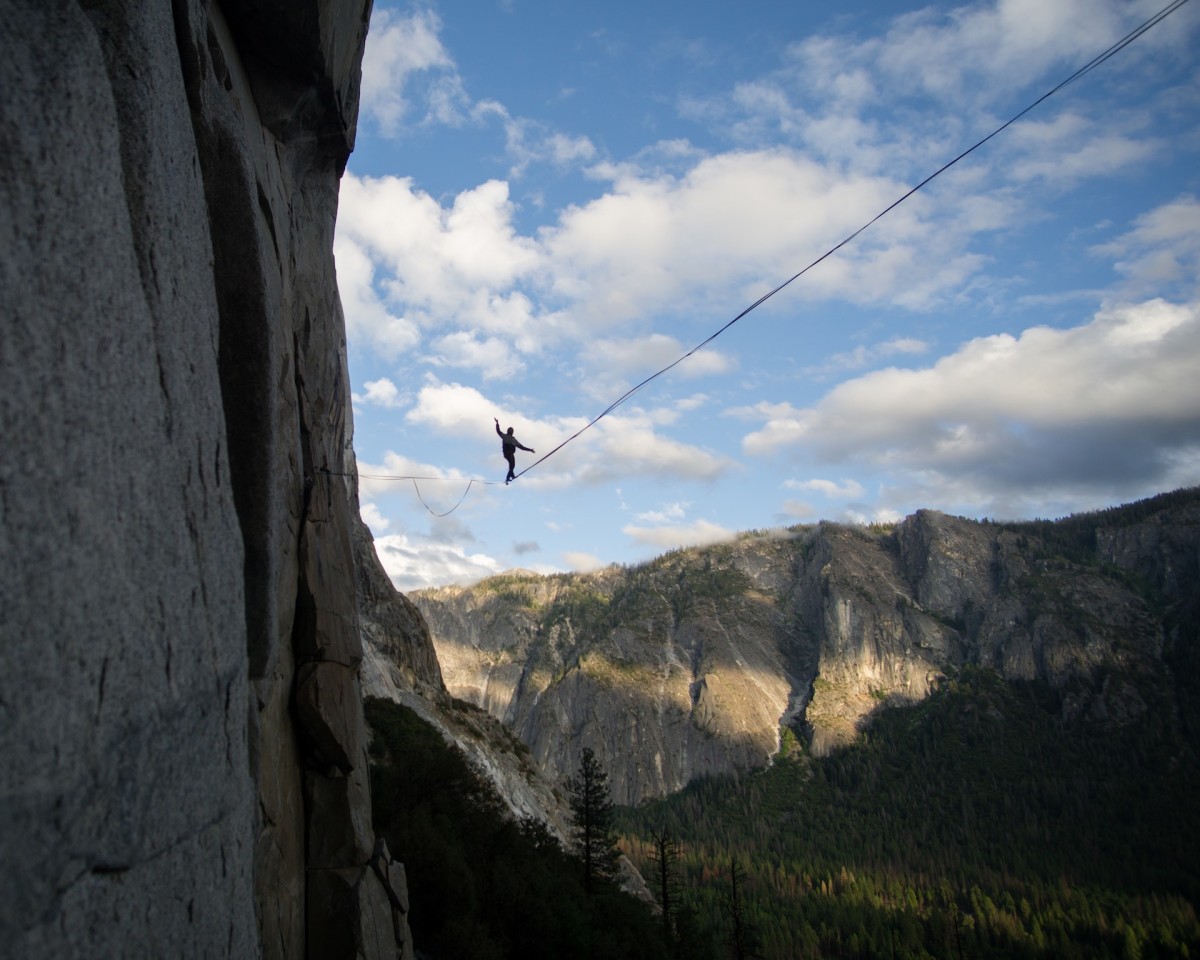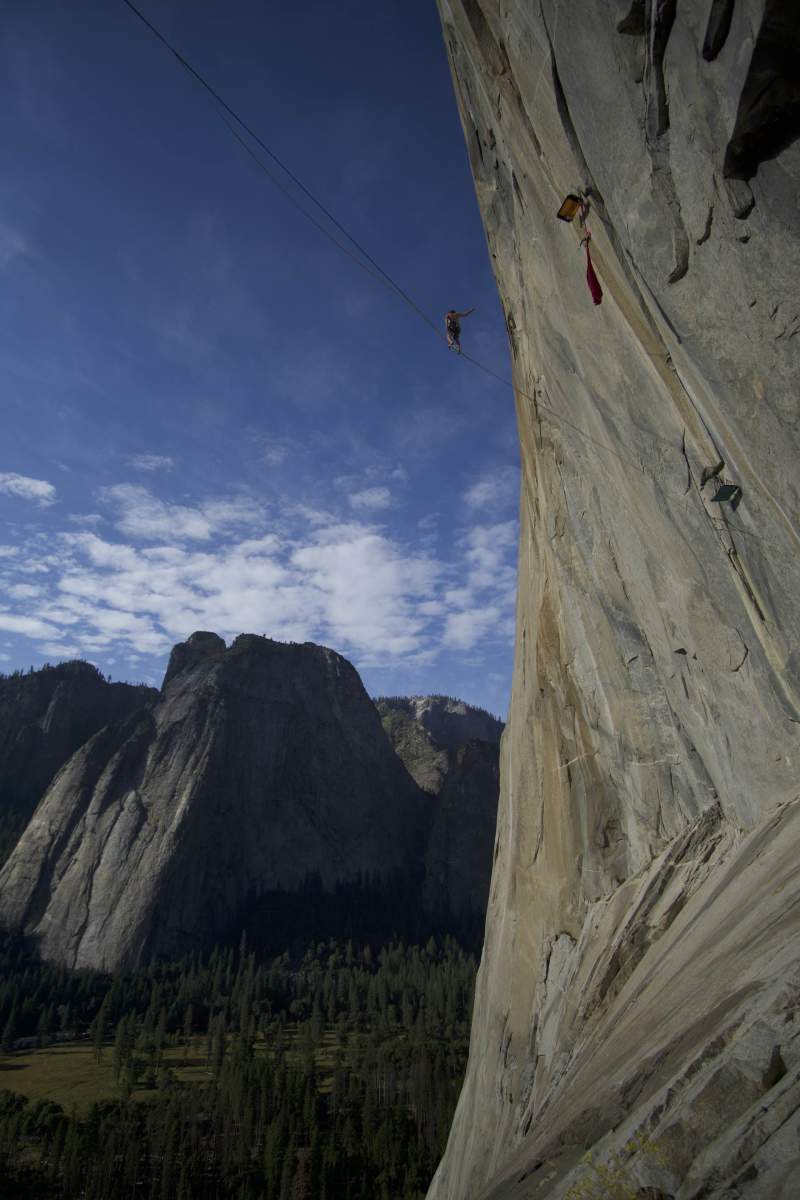The sport of slacklining and highlining has deep roots in Yosemite National Park, going back 40 years. Early pioneers like Chongo Chuck, who some call the godfather of the sport, practiced walking tensioned one-inch webbing between tree trunks. Slacklining is about balance and movement, and as Chongo walks the line, his frame swings gently back and forth over the ground. It may look effortless, but slacklining requires a strong core and hours upon hours of muscle memory.
Chongo mentored the late Dean Potter, who, by ‘highlining,’ pushed the edge of slacklining high above the valley floor. Potter was an early pioneer of highlining on El Capitan. Adding to the challenge, Potter would walk without the safety of a leash, or while wearing a BASE parachute rig. He’d walk across dizzyingly high formations, including the top of the 700-foot Rostrum. Other times, with thousands of feet of exposure below him, he’d walk from Yosemite Falls to the Lost Arrow Spire, and also across Taft Point.
Exploration, pushing through perceived limits of fear, building strength and balance, these are reasons why there’s a culture surrounding slacklining and highlining. Like climbers establishing first ascents, highliners, too, make first line-crossings.
As the sport gains popularity across the U.S. and around the world, new slacklines continue to appear at tall cliffs and over broad valleys.
This fall, Yosemite local Ryan Sheridan and his friends set a new highline across El Cap’s steepest, most exposed section called the Alcove. The goal was two-fold: first was to highline in a new spot, one where the impossibly steep rock nearby would feel like a giant wave cascading over the slacker; second was to make it 100 percent natural and leave nothing behind. That ethic is why they didn’t rely on anchor bolts, and instead relied on the holding power of equalized cams used for rock climbing. On one side of the anchor they used 26 cams. On the other side, they used seven cams and wrapped giant slings around boulders.

Sheridan, who studied physics at the University of Buffalo, puts those skills to use when rigging highlining anchors. There are high forces to consider, upwards of 675 pounds of force (3kN) per side. The terrain is so overhanging that it distorted the slackliners’ proprioception. “The rock around you feels warped and it’s hard to tell distance,” Sheridan says.
The project took two years to complete. Sheridan first rigged the line in September 2017, but no one was able to cross it without falling. Kaj Pandey and Scooter Finney walked the line both ways in September 2019.
“Kaj is insane,” Sheridan says. “He’s one of the best slackliners in the world. They’re both pushing the standards of highlining.”

It took a full week to climb and get the line in place, and then less than 10 minutes to cross the 209-foot span. “These guys are used to walking 500-meter lines,” Sheridan says.
“It’s a ton of work to rig these lines,” Sheridan continued. “Rigging the Alcove is the most complex thing I’ve ever done. I don’t have any immediate plans to rig it again, but when I know I’m strong enough to walk it, I’ll put it back up.”
from Men's Journal https://ift.tt/38BmvDJ
No comments:
Post a Comment